Our colleague, Kassy Alia, spoke at Columbia, SC’s Martin Luther King commemoration on January 21st. The full speech can be found at the video below. If you have never seen Kassy speak, you must. Her passion and genuineness shine through. But do her words reflect what we see and hear with our eyes? Kassy Alia’s Keynote Speech at the City of Columbia’s 31st Martin Luther King Jr. Commemoration I was interested in using sentiment analysis to explore what themes and emotions Kassy brought out during her speech. Sentiment analyses process written text to extract the emotional content behind the words. “When human readers approach a text, we use our understanding of the emotional intent of words to infer whether a section of text is positive or negative, or perhaps characterized by some other more nuanced emotion like surprise or disgust” (Silge & Robinson, 2019). This can help us to understand the emotional meaning that people bring to their words behind the context they say or speak. To analyze Kassy’s speech, I used the tidytext package in R. There is great guidance of how to approach sentiment analysis from Julia Silge and David Robinson’s Text Mining with R; a free! textbook you can find at this link. First, I used the NRC lexicon. NRC is a list of English words and their associations with eight basic emotions (anger, fear, anticipation, trust, surprise, sadness, joy, and disgust and two sentiments (negative and positive), (Mohammad & Turney, 2013). I then visualized the results in two wordcloud groups: emotions and sentiment. I removed a few words (black, white, mother) that NRC codes as “negative” because Kassy was using them in a different context. A few things stood out to me here. First, the placement of the words police and cop. They both appear in trust and fear. To me, this really is at the crux of Serve and Connect’s work: working within people’s understanding of fears, worries, and concerns, and trying to bridge toward more collaborative action. Second, the word community jumps out as a core positive theme. This is pretty consistent with S&C’s mission: When police and citizens work together, we grow strong communities. Together, we are working to build community resilience and well-being through transformative police and community partnerships. I then added the bing lexicon to the mix. Bing cluster words into broader categories: positive and negative (Liu, 2015). I compared this to nrc’s sentiment categories. Here, I think we can see pretty clearly the themes that can hinder this type of work, but also the mindset that can hopefully facilitate it. Finally, I looked at the emotionality of Kassy’s speech over time while she was talking. I know absolutely nothing about effective public speaking, much less about sharing my own story. However, what’s interesting here is that after some initial greetings, the content of Kassy’s speech leans to the negative, but then builds to the positive over time (and certainly ends on a very positive note). Is it accurate? Watch the video and be the judge! 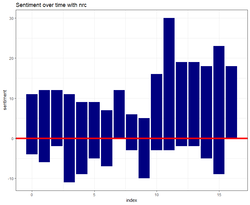 Our evaluation work can sometimes come across as exceptionally technical and potentially dry as dust. However, many of our interactions with community stakeholder are filled with emotion as people come to the work with their own values and hopes. Use of sentiment analyses provides another lens to dig deeper into the work and elicit the emotional content of what people say and write. Sources
Liu, B. (2015). Sentiment analysis: Mining opinions, sentiments, and emotions. Cambridge University Press. Mohammad, S. M., & Turney, P. D. (2013). Crowdsourcing a word–emotion association lexicon. Computational Intelligence, 29(3), 436-465. Silge, J., & Robison, D. (2019-02-10). Text Mining with R. retrieved from https://www.tidytextmining.com
1 Comment
Leave a Reply. |
Categories
All
Archives
September 2023
|


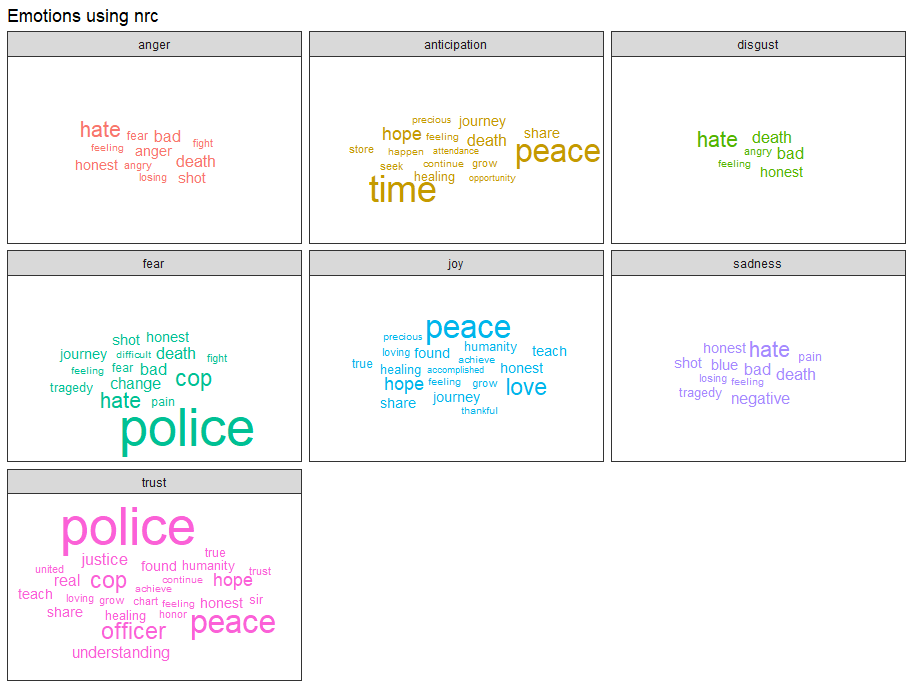
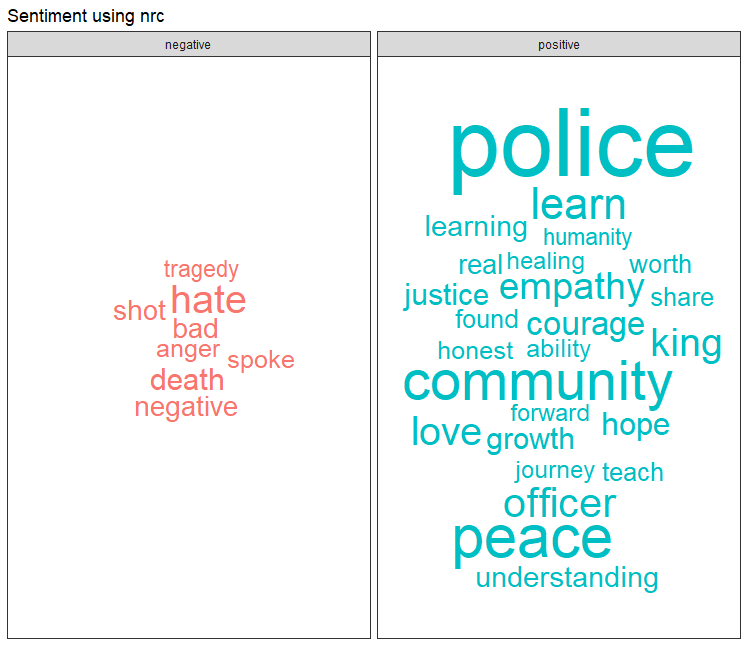
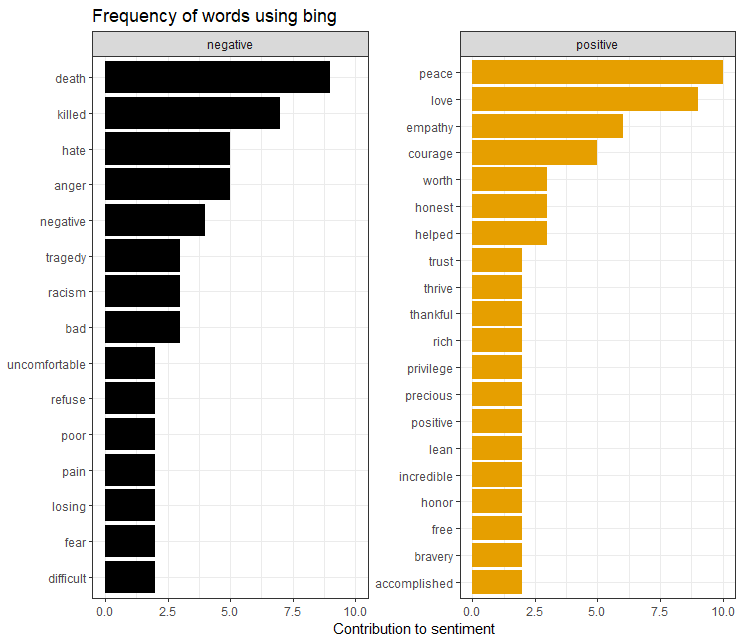
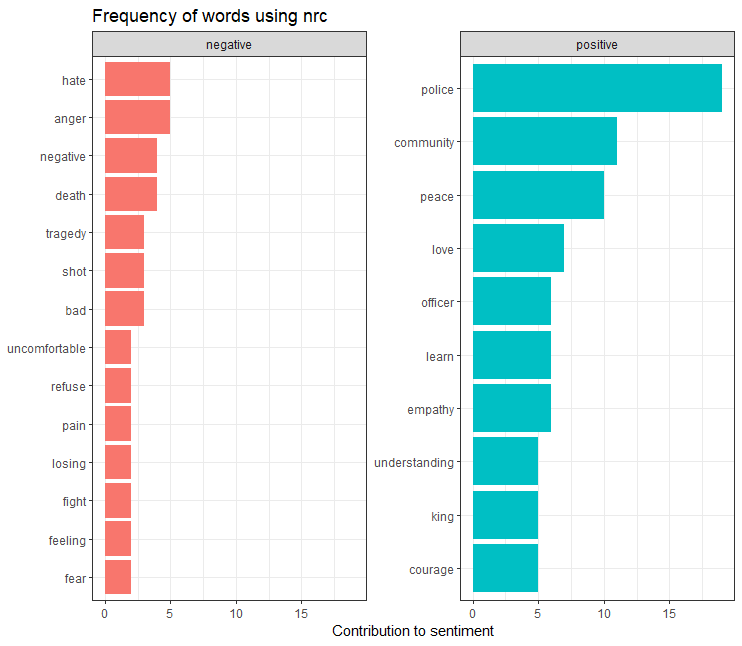
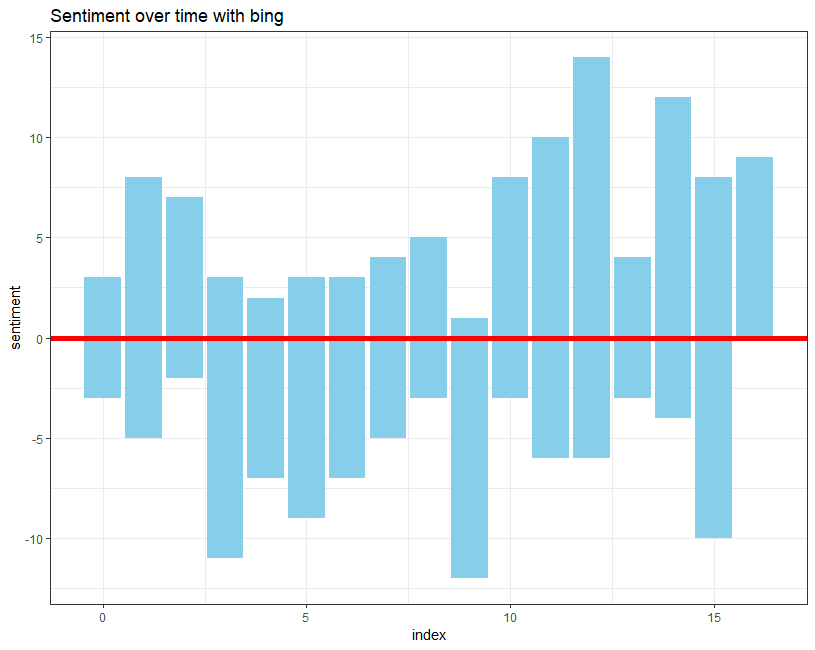
 RSS Feed
RSS Feed
